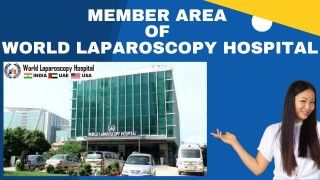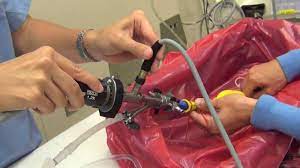Understanding Appendicitis: Causes, Symptoms, and Laparoscopic Treatment Options for Quick Recovery
Add to
Share
965 views
Report
2 years ago
Description
Appendicitis is a common medical condition that affects millions of people every year. It occurs when the appendix, a small tube-shaped organ attached to the large intestine, becomes inflamed and infected. If left untreated, appendicitis can lead to serious complications, such as a ruptured appendix, which can be life-threatening. In this topic, we will explore the causes, symptoms, and treatment options for appendicitis. We will discuss how the condition develops, common risk factors, and the various signs and symptoms that patients may experience. We will also examine the importance of early detection and prompt treatment to avoid serious complications. In particular, we will focus on the laparoscopic treatment of appendicitis, which has become a popular and effective option in recent years. Laparoscopy is a minimally invasive surgical technique that uses small incisions and a tiny camera to view and treat the appendix. This approach offers several benefits over traditional open surgery, including reduced pain, shorter hospital stays, and quicker recovery times. We will also explore the different types of laparoscopic appendectomy procedures that are available, including the single-incision laparoscopic surgery (SILS) and the standard laparoscopic appendectomy. We will examine the advantages and disadvantages of each approach and how patients can work with their doctors to determine the best treatment option for their individual needs. Overall, this topic will provide readers with a comprehensive understanding of appendicitis, including its causes, symptoms, and treatment options. With this knowledge, patients can better protect themselves from this common and potentially dangerous condition and make informed decisions about their healthcare. Appendicitis is a condition that can affect people of all ages, but it is most common in individuals between the ages of 10 and 30. It is typically caused by a blockage in the appendix, which can lead to the buildup of bacteria and infection. Common risk factors for developing appendicitis include a family history of the condition, a previous abdominal surgery, and a diet high in processed foods and low in fiber. Symptoms of appendicitis can vary from person to person, but typically include abdominal pain, fever, nausea, and vomiting. If left untreated, these symptoms can worsen and may even lead to a ruptured appendix, which can cause infection and other serious complications. Laparoscopic treatment of appendicitis has become increasingly popular in recent years, thanks to its minimally invasive nature and faster recovery times. During a laparoscopic procedure, a surgeon will make several small incisions in the abdomen and use specialized tools to remove the infected appendix. This approach offers several advantages over traditional open surgery, including less pain, a shorter hospital stay, and a faster return to normal activities. Single-incision laparoscopic surgery (SILS) is a newer approach to laparoscopic appendectomy that involves a single incision in the belly button. While SILS offers a potentially better cosmetic outcome, it can be more technically challenging for surgeons and may not be suitable for all patients. Overall, understanding the causes, symptoms, and treatment options for appendicitis is essential for anyone at risk of developing this condition. With early detection and prompt treatment, patients can avoid serious complications and achieve a quick and full recovery.
Similar Videos






